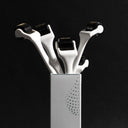Have you noticed more hair shedding during autumn, especially if you live in the Northern Hemisphere?
Up until now, it is not known exactly why we shed more hair during a particular season, but it is something that many people complain about, especially in Europe.
However, with all these self-reports of people claiming they shed more in the spring or fall, researchers sought to investigate if the seasonality of hair loss did exist and what the reason is behind such a phenomenon.
In this article, let's shed light on the seasonal pattern of hair loss and defuse any anxieties you may have about this completely normal hair shedding.
Table of content
Summary
Hair shedding is often the highest during the late summer and autumn. But during the winter and summer, this rate decreases significantly.
This might be because of the reaction of the head insulation and the scalp against seasonal changes. The telogen phase extends to keep more hairs on your scalp during summer and winter. Once these seasons are over, there is more hair shedding because it is time to begin the hair growth cycle again.
As your leading source for hair health information over the past 4 years, we never compromise on accuracy. When it comes to your health, you deserve information you can truly rely on - and earning your trust is our top priority.
Here's how Scandinavian Biolabs ensures every piece of content meets the highest standards of accuracy and integrity:
- Credentialed Experts: Our reviewers are actively practicing doctors and medical researchers
- Stringent Reviews: Content undergoes rigorous editing by subject specialists and review by a practicing doctor.
- Evidence-Based: We rely on well-established research from trusted scientific sources like peer-reviewed journals and health authorities.
- Full Transparency: Our editorial standards, writer credentials, reviewer credentials, correction process, and funding are all publicly documented.
- Independent Voice: While we do promote products, we operate in a vacuum to business operations. Our main goal is just an unwavering commitment to providing medically-sound guidance.
You can count on Scandinavian Biolabs to consistently deliver the trustworthy health information you deserve. Read our Editorial Standards.
The Hair Growth Cycle
As we all know, the cycle of hair growth includes four stages: anagen, catagen, telogen, and exogen.
The anagen phase or the growing stage lasts from 2 to 6 years. During this phase, hairs grow up to 100 cm in length.
The second phase, catagen, lasts for only a few weeks. It is the transition stage in which metabolic activity slows down, hair follicles shrink and detach from dermal papillae.
The third phase lasting up to three months is called telogen. During this time, your hair ceases to grow and enters the resting stage.
Exogen is the last stage which takes place in a few days. This stage represents the period from when a resting hair reaches its terminal position in the follicle to when it finally detaches.
The hair growth cycle would generate hair replacement every 3 to 5 years, and each hair follicle can undergo 10-30 cycles in a lifetime.
Out of all hairs at any given time in a normal healthy person’s scalp, 9% are in the telogen phase, 1% in the catagen phase, and 90% in the anagen phase.
The telogen rates of 10-20% are considered normal. However, to maintain a consistent covering, the amount of hair formation needs to match the shedding amount.

The seasonality of hair shedding
Seasonal hair loss pattern is defined by differing rates of hair shed throughout different seasons.
So far, there is limited research on this topic but one study that can guide is an experiment involving 823 women without any underlying forms of alopecia.
Researchers found out that among them, the proportion of telogen hairs tend to reach a maximum during summer, thus resulting in an additional amount of hair shedding in the following months.
Most of the women in the experiment were in the telogen phase of the hair growth cycle during summer months (e.g., July), while the lowest telogen rates are during winter. Later on, those telogen hairs will all likely begin shedding from September to November.
These results indicates that seasonal changes generate a discernible influence on the hair growth cycle of women.
What causes seasonal hair shedding?
The same study claims that seasonal hair shedding is more likely a selective reaction of the head insulation. This bodily reaction will protect the scalp from the cold in winter and the heat of the midday sun during summer.
As we previously said, in order to maintain a normal hair growth cycle, the amount of new hair must match the shedding amount. However, during summer and winter, the telogen phase becomes longer to protect the scalp from potential seasonal harm (e.g., heat, cold).
Therefore, more telogen hairs remain on the scalp for a longer time than usual, and after those seasons have passed, the telogen hairs will shed altogether.
Read more: Why Is Your Hair Falling Out With White Bulb?
Due to this seasonality of hair loss, the number of hair strands falling is higher than usual at certain times of the year, which may cause you to misinterpret these signs as alopecia or pattern hair loss. This is not accurate!
Seasonal hair loss is temporary and should last no longer than 4 to 6 weeks. Hair loss during such periods could happen purely because of your body's mechanism to protect your scalp from the harmful changes of the weather.
Hair care through the seasons
Now we all know that during late summer and autumn, your hair shedding can happen more intensely than usual. This is normal if you are not experiencing any other signs or symptoms.
Your hair cycle is ongoing, and the anagen phase, where new hair is produced, is part of this natural process. So, there's no reason for you to worry or panic!
With that said, it is crucial to protect and nurture your scalp so that your new hair will grow strongly in the anagen phase. Instead of wasting your time worrying about the quantity of hair shedding, you can pay more attention in taking care of your existing hair and fostering the best scalp condition for your hair to grow in.
During the summer and autumn seasons, you might consider trying Scandinavian Biolabs' Hair Strength Shampoo and Recovery Conditioner.
You might also consider adding a nourishing mask or serum to your hair care routine, which could contribute to a healthier scalp.
However, whenever noticing a severe condition of hair loss, you should visit your dermatologists. Having your hair issue determined and treated as early as possible is one best way to avoid irreversible damages.
Read more: I Can See My Scalp through My Hair: What Do I Do?

Related Articles:
- Female Hairlines: Every Types Of Hairlines
- 17 Best & Effective Hair Growth Oils To Achieve Your Hair Goals
- 14 Best Hair Growth Serums For Superior Hair Growth (2022)
References
Hsiang, E. Y., Semenov, Y. R., Aguh, C., & Kwatra, S. G. (n.d.). Seasonality of hair loss: A time series analysis of Google Trends data 2004 to 2016. 6.
Kunz, M., Seifert, B., & Trüeb, R. M. (n.d.). Seasonality of Hair Shedding in Healthy Women Complaining of Hair Loss. 6.
Grover, C., & Khurana, A. (2013). Telogen effluvium. Indian Journal of Dermatology, Venereology, and Leprology, 79(5), 591.





